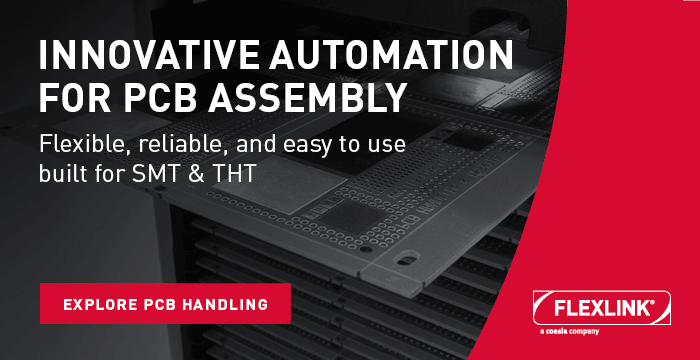
SMT & Inspection |
Lead-free initiatives expand horizons for selective soldering technology
Selective soldering is being increasingly preferred to traditional wave (using pallets) and hand soldering techniques due to the enhanced capabilities in terms of cost, defect reduction, solder quality, and improved throughput.
Lead-free soldering has enabled selective soldering technology to gain more prominence and wider adoption.
The industrial, telecommunication, aerospace, and medical segments are some of the areas where opportunities abound for selective soldering. The technology would be appropriate for electronics assembly manufacturers dealing with mixed technology boards. Currently, selective soldering is gaining traction among contract manufacturers.
"The automotive segment has been a vital factor in driving innovations in the selective soldering sector," notes Technical Insights Industry Analyst Kasthuri Jagadeesan. "Moreover, as mission critical applications such as military/defense and homeland security require highly reliable electronic assemblies, selective soldering has proved to be an excellent alternative to wave and hand soldering."
Although wave soldering is a traditional technology, the element of competition with selective soldering still exists. Some of the applications still rely on the dexterity of the hand; thus, it is difficult to completely replace hand soldering. Press-fit and pin-in-paste are other competing technologies for selective soldering.
A large number of manufacturers compete in the selective soldering space. Major market participants include Pillarhouse, ERSA, Vitronics Soltec, SEHO Systems GmbH, JUKI CORPORATION, ACE Production Technologies Inc, and RPS Automation, LLC. There is an increasing pressure to offer distinctive services in terms of pricing, specifications, performance, brand name, sales, services, and training support. Therefore, profit margins may be influenced, driving the market toward consolidation, finds Frost & Sullivan.
Due to intensifying competition, manufacturers are devising pricing strategies, but truncated margins are the inevitable fallout. The gravitation toward low-cost machines could trigger a tradeoff between cost and performance. Manufacturers involved in high-volume production can manage to achieve economies of scale; however, for other manufacturers, price reduction would seriously impair profit margins. Significant price variations exist with different categories of equipment, and this is heavily dependant on the functionalities and level of sophistication provided by the manufacturer.
Competition from traditional technologies, improving the performance characteristics of the machines, and lack of standardization are some of the challenges associated with selective soldering technology. There is always a need for high throughput, reduced cycle time, and highly precise selective soldering machines.
"Selective soldering is a mature technology and over the past years, research and development activities are directed toward new nozzle designs, modular and flexible machines, multipoint fluxing systems, and low-cost machines," says Jagadeesan. "Some of the manufacturers are interested in integrating inspection systems with the selective soldering machines to monitor solder quality."
In future, it is desirable to have a single machine with different soldering capabilities fitting into various production profiles and applications. Manufacturers are contemplating complete transition to surface mount components, though through-hole technology has not been eliminated. Selective soldering will continue to find opportunities as long as through hole components are employed in circuit boards.
Taking the wide-angle view, savvy participants would be wise to enter into strategic partnerships with original equipment manufacturers (OEMs) or contract manufacturers to enable the market to move forward in high gear.



